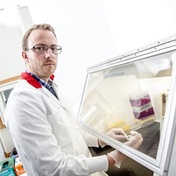They used a common cold virus to carry transformative genes into ordinary mouse cells, making them look and act like embryonic stem cells.
If the same can be done with human cells, it may offer a safe way to test cell therapy to treat diseases such as sickle cell anemia or Parkinson's, Konrad Hochedlinger of Massachusetts General Hospital and Harvard Medical School in Boston reported in the journal Science on Thursday.
Stem cells are the body's master cells, giving rise to all the tissues, organs and blood. Embryonic stem cells are considered the most powerful kinds of stem cells, as they have the potential to give rise to any type of tissue.
But they are difficult to make, requiring the use of an embryo or cloning technology. Many people also object to their use, and several countries, including the United States, limit funding for such experiments.
How the research was done
In the past year, several teams of scientists have reported finding a handful of genes that can transform ordinary skin cells into induced pluripotent stem cells, or iPS cells, which in turn look and act like embryonic stem cells.
To get these genes into the cells, they have had to use retroviruses, which integrate their own genetic material into the cells they infect. This can be dangerous and can cause tumors and perhaps other effects.
Hochedlinger's team used a much more harmless virus, called an adenovirus, to carry into the cells the four transformative genes, called Oct4, Sox2, Klf4 and c-Myc. They used mouse skin cells and also liver cells from fetal mice and got both types to look and act like iPS cells.
"The nice thing about adenoviruses in contrast with retroviruses is they deliver proteins inside the cells but they will never, ever integrate their DNA into the cells," Hochedlinger said.
As the cells divide, they dilute the virus until it disappears, he said. But the genetic changes remain.
To test the cells they made chimeras - a blend of two separate animals. They injected their newly made cells into mouse embryos and when the pups were born, they carried visible evidence that the cells had indeed transformed them.
Human reprogramming 'takes time'
"It results in this stripy pattern of brown fur that comes from the iPS cells and black fur which comes from the host embryo tissue," Hochedlinger said.
And so far, these chimeric mice have not developed any tumors. "We are in the process already of trying to make integration-free iPS cells in human cells," Hochedlinger said.
"It is a little more tricky because human reprogramming takes a little while longer than mouse reprogramming."
If it works, some day doctors may be able to make tailor-made transplants to treat diseases in people by removing a few cells, transforming them in the lab and transplanting the new tissue or organs back in. – (Reuters Health, September 2008)
Read more:
Blood cells made from stem cells
Another stem cell breakthrough?




 Publications
Publications
 Partners
Partners










